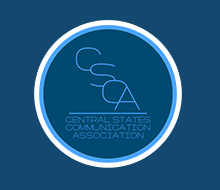Abstract
Effective facilitation of classroom dialogue can stimulate open discussion and debate, challenge students to consider diverse perspectives, and promote critical student reflection and growth. Unfortunately, some instructors may be hesitant to approach controversial topics, for fear of losing face or risking chaos in the classroom. By learning and practicing established facilitation techniques, teachers can develop confidence and competence in harnessing the pedagogical power of difficult dialogue while maintaining classroom cohesion and community. This article provides 10 best practices for facilitating difficult classroom dialogues. These practices equip instructors with resources for building community, maintaining classroom immediacy, and grappling with disagreements without destroying relationships and classroom climate.
DOI
10.31446/JCP.2019.23
Recommended Citation
Ruiz-Mesa, K., & Hunter, K. M. (2019). Best practices for facilitating difficult dialogues in the basic communication course. Journal of Communication Pedagogy, 2, 134-141. https://doi.org/10.31446/JCP.2019.23
Included in
Curriculum and Instruction Commons, Other Communication Commons, Other Education Commons, Scholarship of Teaching and Learning Commons

